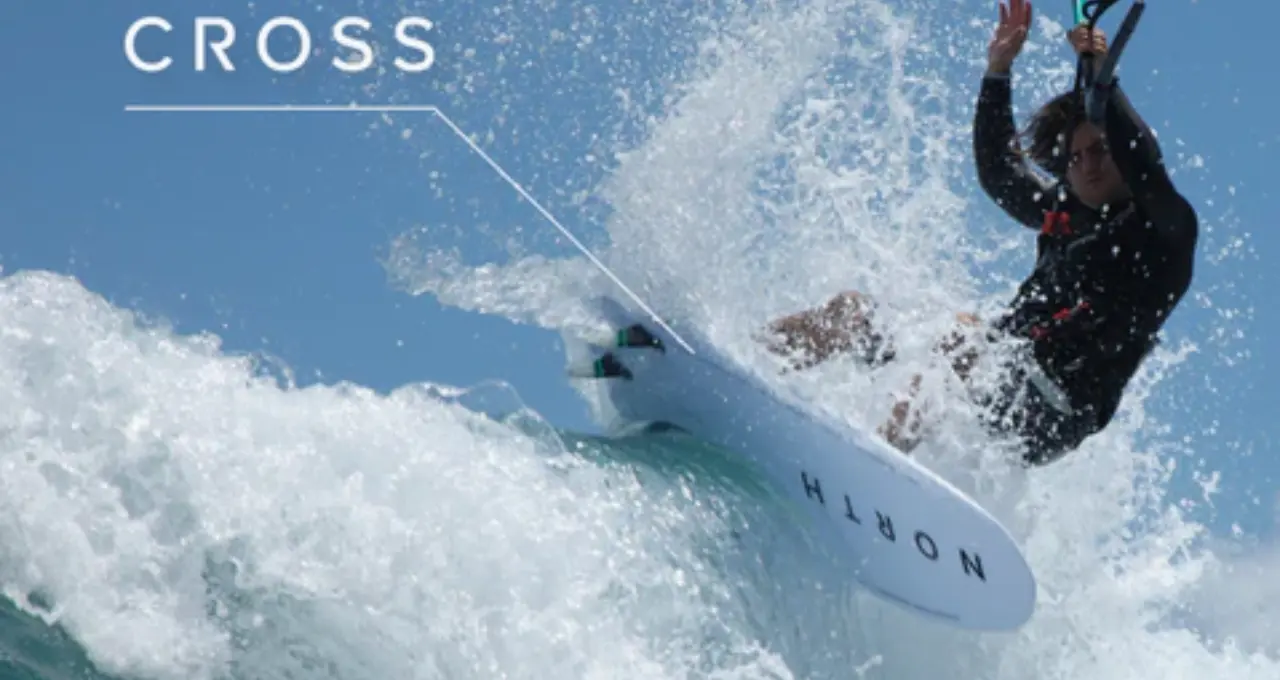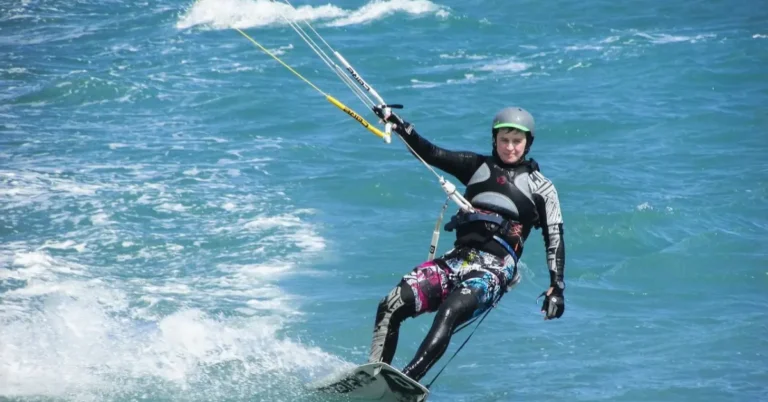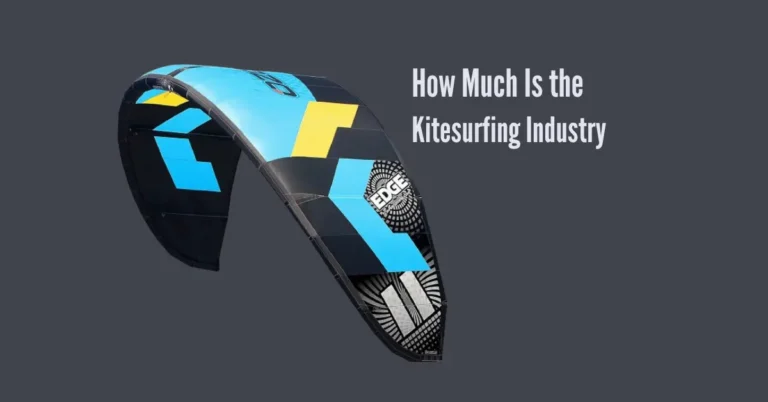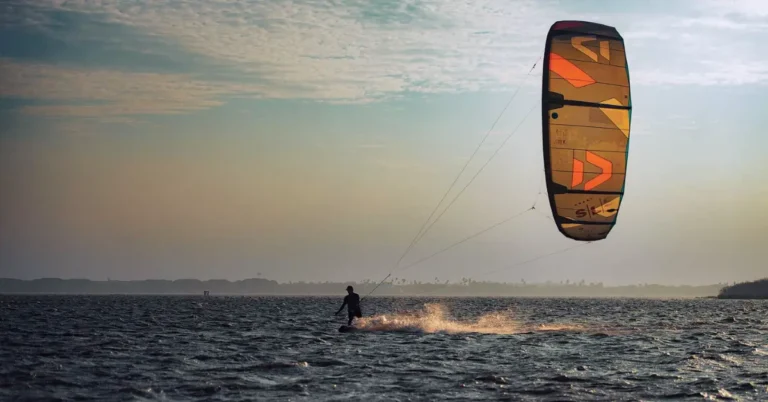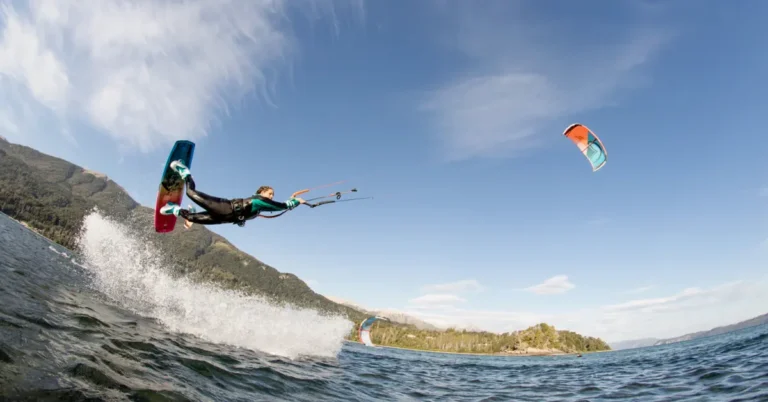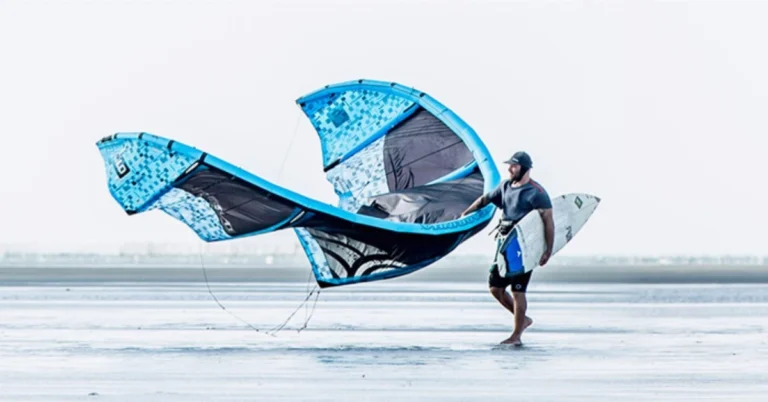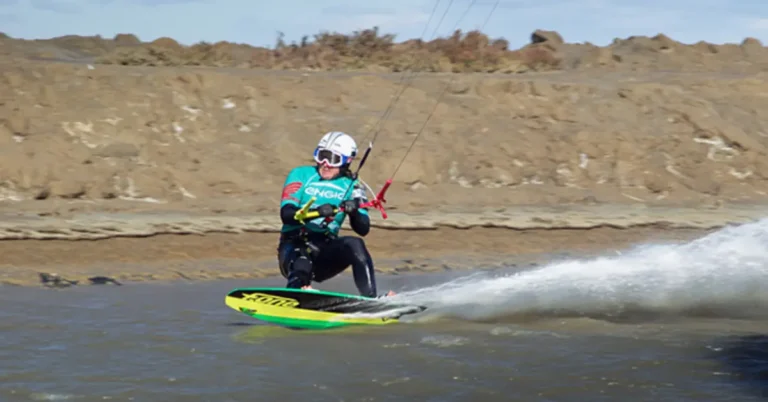How Much Does It Cost to Start Kitesurfing?
Starting kitesurfing involves various costs, mainly for lessons and gear. Expect to spend around $500 to $800 for lessons, which is crucial for safety. You’ll need at least two kites, ranging from $500 (used) to over $1000 (new) each.
Other essentials include a kiteboard ($300-$500), harness ($75-$200), kite pump ($30-$50), wetsuit ($150-$300), and impact vest ($50-$100).
The budget is around $1900 to nearly $4000, depending on lesson duration and gear condition. While costs can vary widely, there are options for starting kitesurfing at a reasonable price, making it an accessible sport despite its initial financial hurdle.
Also Read: Jump or Pop Kitesurfing
How much does kitesurf instruction cost?
Starting with kitesurfing lessons is crucial for safety and effectiveness. Attempting to teach yourself is risky and counterproductive. Lesson prices vary depending on location and season, but waiting for off-peak times can offer more affordable rates, around $50-$60 per hour for group lessons including gear.
It’s essential to choose a reliable school with experienced instructors. Budget around $500-$700 for 10 to 12 hours of guided instruction. Some beginners opt for pricier boat or jetski-assisted lessons, which can accelerate learning. Additionally, practising basic flying skills on a trainer kite can help save time and money before formal lessons.
How Much Does It Cost To Learn Kitesurfing?
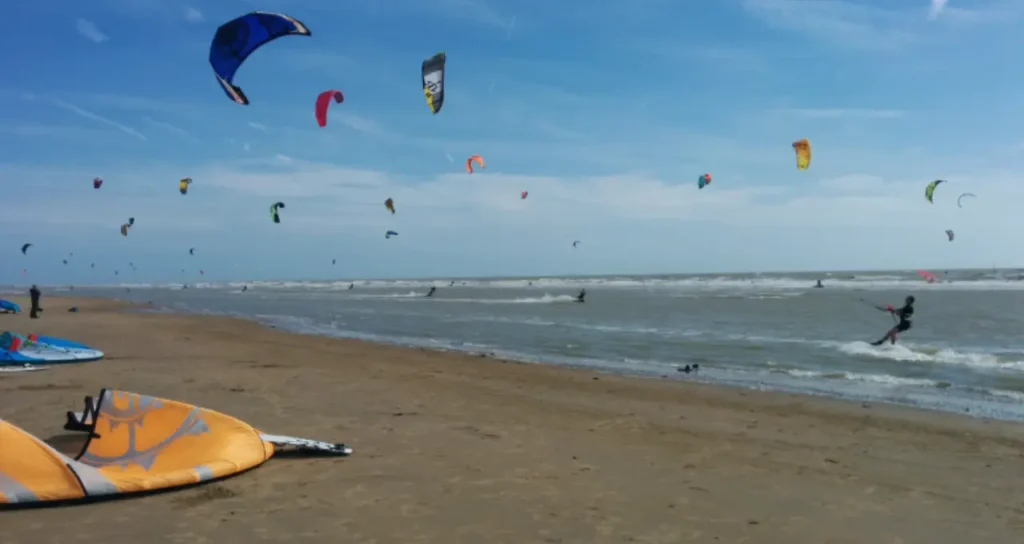
How much does it cost to buy a kite?
Buying a new kite from the latest model can cost around $1300 for a 9m2 size, excluding the control bar, which adds another $400. Sizes vary in price, with a 12m2 size costing about $200 more and a 7m2 size being $150 cheaper. So, for a complete setup, expect to spend $1500 to $2000, possibly more for high-tech control bars.
If you’re new to kitesurfing, you’ll likely need at least two kite sizes to cover various wind conditions. Buying two new kites can total over $3000.
Consider buying models from the previous year at a 30% discount or look for used kites to lower costs. However, buying used kites requires careful assessment of their condition, and purchasing from reputable sellers is advisable. Used kites around 3 years old and priced around $500 can be good options.
How much does a beginner kiteboard cost?
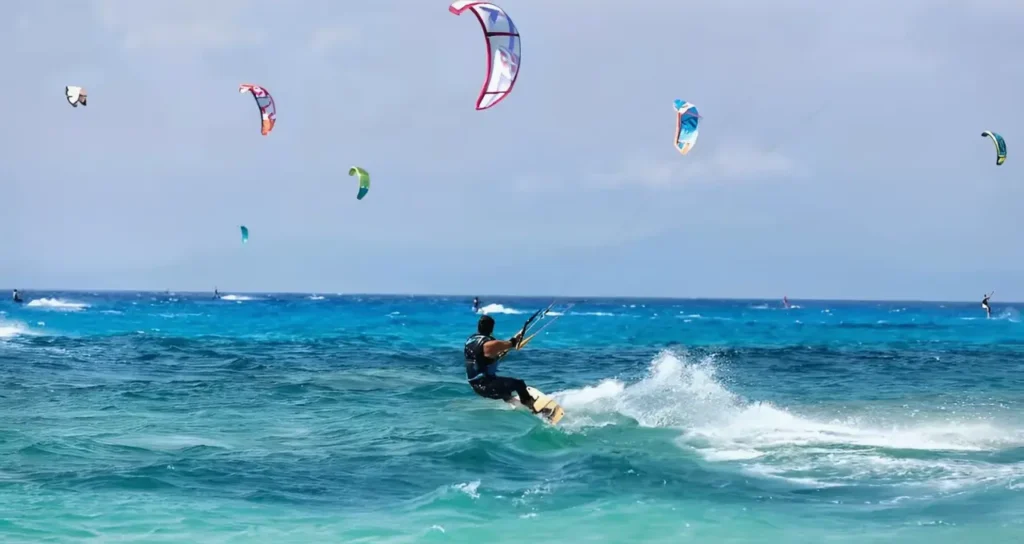
Kiteboards typically range from $500 to $700 but can sometimes cost up to $1000. However, it’s common to find used boards in good condition for around $300. Starting with a kiteboard from a well-known brand is usually fine, even if it has some scratches, as long as it’s fully functional.
The board size depends on your height, weight, skill level, and the wind and water conditions you’ll be riding in. Kitesurf schools often use larger boards 1.6m-1.7m to assist beginners with water starts. Bigger riders may also need larger boards. For riding in choppy conditions and performing tricks, a board around 1.35m-1.45m is recommended.
How much does other kitesurfing equipment cost?
In addition to kites and kiteboards, a harness is essential for kitesurfing. There are two main types:
Seat Harnesses and Belt Harnesses.
Seat harnesses are worn like shorts around your hips, providing stability and comfort. They’re great for beginners due to their stability and low towing point.
Belt harnesses offer more freedom of movement as they wrap around your waist and torso. They’re preferred for freestyle tricks and wave riding.
Both types of harnesses cost around $150-200 when new, but you can often find discounts for around $100. Used harnesses can be found for $50-$75, but inspect them for wear and tear before purchasing.
Wetsuit
Besides a harness, most kitesurfers need a wetsuit to stay warm in windy conditions. Wetsuit prices vary based on thickness, shape, material, and brand, ranging from $100 to $400.
For comfort and durability, I prefer cheaper wetsuits with 3/2mm thickness for warm weather and 4/3mm for cold. I opt for standard neoprene over high-stretch neoprene, as it holds up better against harness rubbing. For added protection, look for wetsuits with wind-resistant neoprene patches on the front and back.
Impact vest
Impact vests provide some flotation but are not substitutes for life jackets. They offer protection against impacts from your board or hard falls into the water. However, if you’re unconscious, they may not keep your head above water.
While wearing a life jacket while kitesurfing can be challenging, impact vests are designed for comfort and mobility. Prices for impact vests are around $100, but you may find used ones for about $50.
What is the ongoing cost of kitesurfing?
After your initial investment to start kitesurfing, ongoing costs must be considered. Your kites typically last 2-3 years, but you must take good care of them to prolong their lifespan. Factors like leaving your kite in the sun, crashing it frequently, or storing it improperly can shorten its lifespan.
Renewing your kite lines every couple of years is crucial for safety, with four lines costing between $150 and $250. Regularly check and replace parts of your control bar as needed.
Plan to replace your wetsuit every 1.5 to 2 years, depending on how often you kitesurf. Other ongoing costs include investing in additional kite sizes, surfboards, or foils, accessories like a wind meter, neoprene boots, helmet, and travel expenses for exploring new kitesurfing spots.
Is Kitesurfing as Costly as Other Sports?
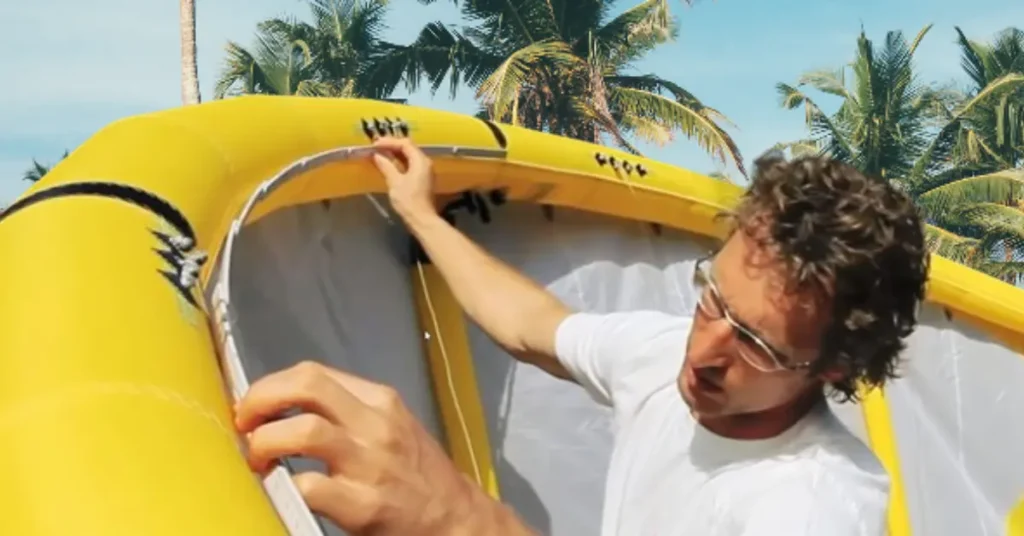
Starting kitesurfing might initially seem costly, but it’s often more budget-friendly in the long run than other action sports like windsurfing or snowboarding. For instance, snowboarding lessons are similar in price to kitesurfing lessons, but expenses quickly add up with lift passes and travel costs.
Once you’ve learned kitesurfing and bought your gear, most sessions are free. Unlike other sports, we harness the power of the wind and waves without paying extra fees for access to the water. Many kitesurfing spots worldwide offer free access without membership fees or time restrictions.
5 Tips To Save Money When Learning Kitesurfing!
Frequently Asked Questions
Conclusion
Starting kitesurfing involves several initial expenses, including lessons and purchasing gear such as kites, boards, harnesses, and wetsuits. However, despite the initial investment, kitesurfing offers long-term enjoyment and freedom on the water.
By carefully managing ongoing maintenance costs and taking advantage of cost-saving opportunities like package deals and used equipment, enthusiasts can make kitesurfing a rewarding and affordable activity over time, enjoying the thrill of riding the waves for years to come.
